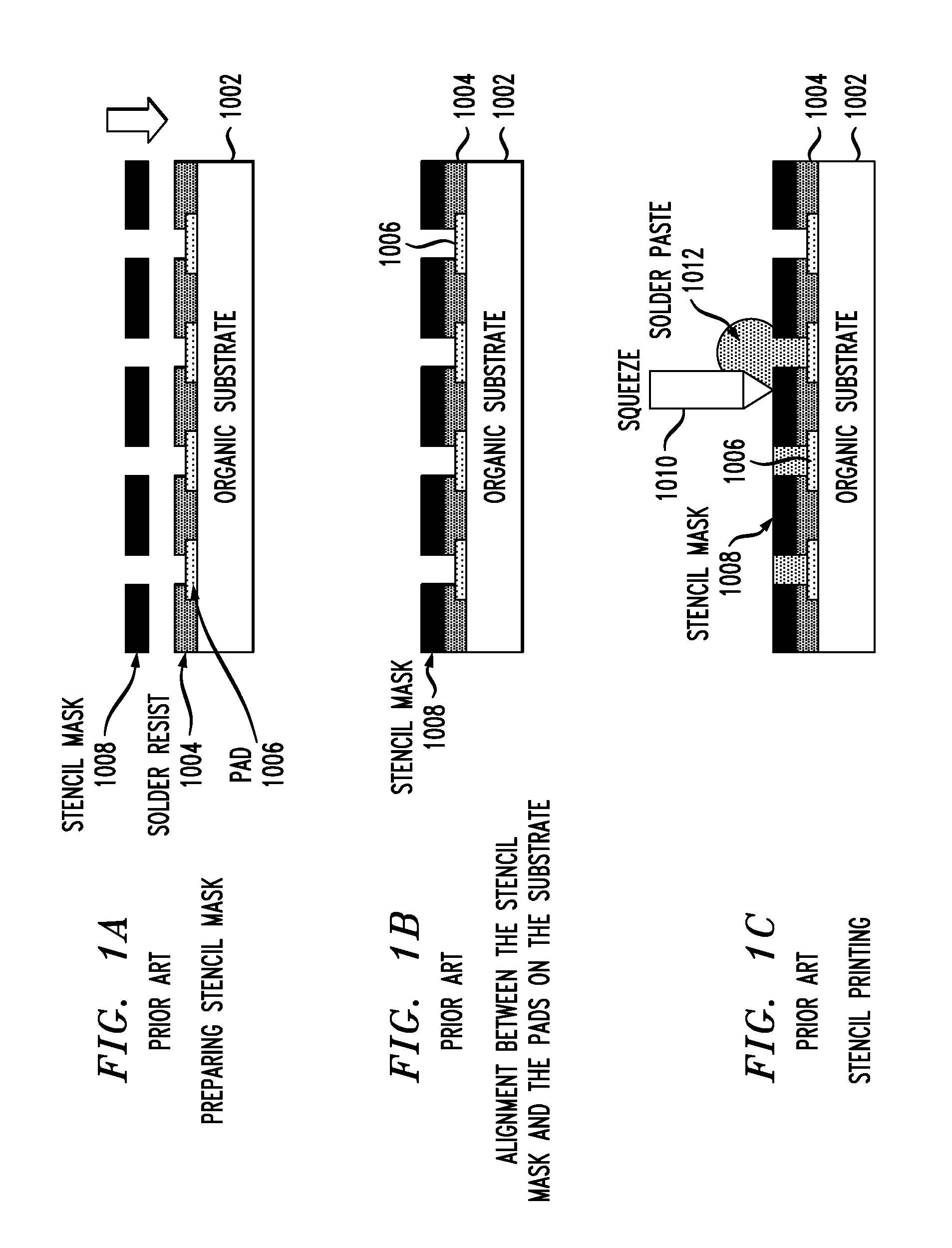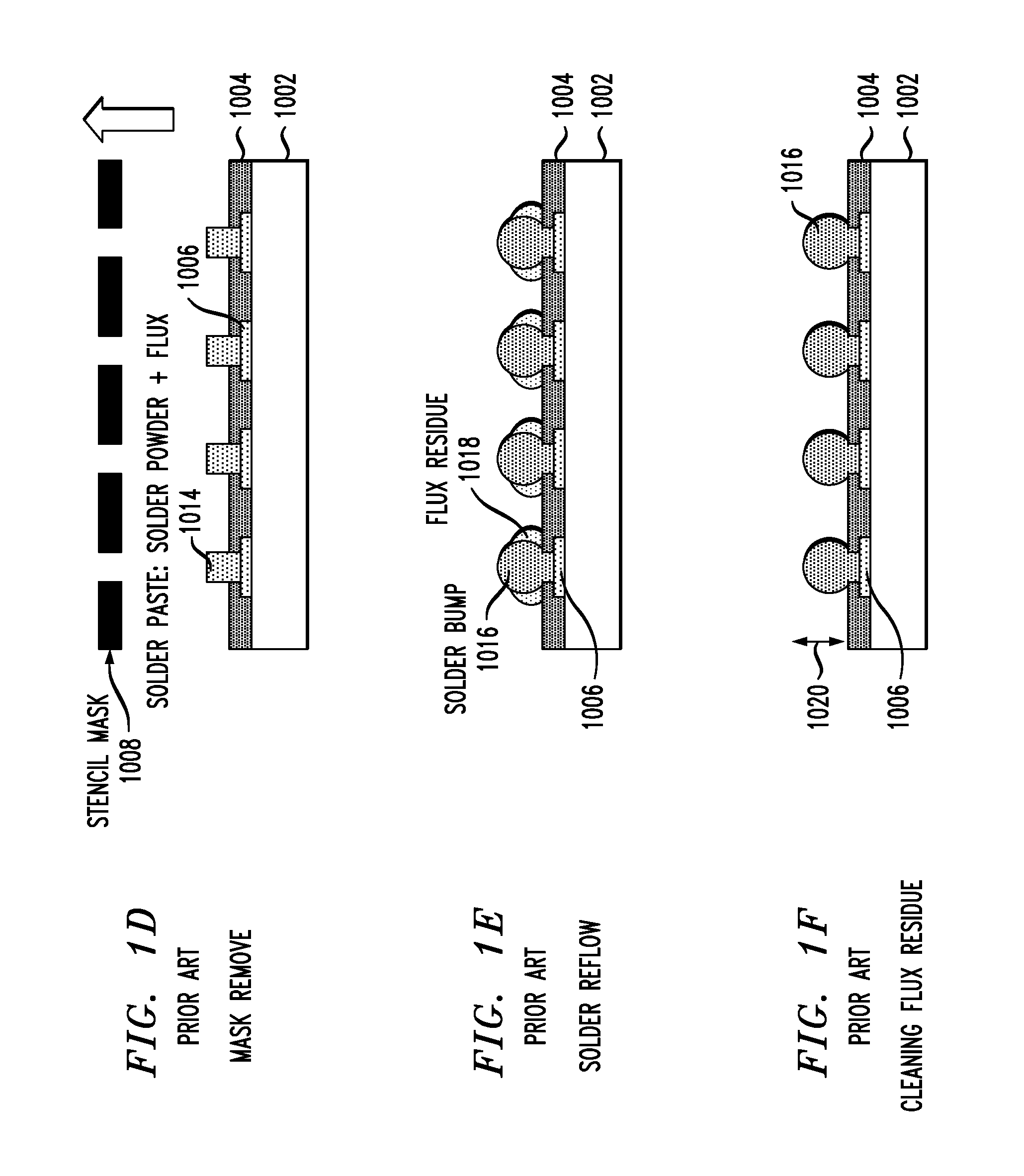Direct IMS (injection molded solder) without a mask for forming solder bumps on substrates
a technology of injection molding and solder, which is applied in the direction of resist details, lithographic masks, non-printed masks, etc., can solve the problems of flux application, reduced solder balls b>2008/b> may be expensive, and limited commercial applications of the solder paste stencil printing method
- Summary
- Abstract
- Description
- Claims
- Application Information
AI Technical Summary
Benefits of technology
Problems solved by technology
Method used
Image
Examples
Embodiment Construction
[0021]Initially, the complete disclosure of U.S. patent application Ser. No. 12 / 269,240 of Gruber et al., filed Nov. 12, 2008, entitled “Injection Molded Solder Method for Forming Solder Bumps on Substrates” (“the '240 application”) is expressly incorporated herein by reference in its entirety for all purposes. FIGS. 3A-3F depict certain techniques of the '240 application. Attention should now be given to FIGS. 3A and 3B. As seen therein, a mask 102 includes a plurality of through holes 104 arranged in a desired pattern. The mask 104 is located adjacent a substrate 106. The substrate may be, for example, an organic substrate with a plurality of wet-able pads 108 (for example, copper, gold, nickel, and the like) located in recesses. The mask may be, for example, a polyimide film or a thin material that does not react with solder (e.g., non-wetting metals such as molybdenum, stainless steel, aluminum, and the like). As shown in FIG. 3A, the mask 102 is aligned to the substrate 106 so ...
PUM
| Property | Measurement | Unit |
|---|---|---|
| distance | aaaaa | aaaaa |
| thickness | aaaaa | aaaaa |
| thickness | aaaaa | aaaaa |
Abstract
Description
Claims
Application Information
 Login to View More
Login to View More - R&D
- Intellectual Property
- Life Sciences
- Materials
- Tech Scout
- Unparalleled Data Quality
- Higher Quality Content
- 60% Fewer Hallucinations
Browse by: Latest US Patents, China's latest patents, Technical Efficacy Thesaurus, Application Domain, Technology Topic, Popular Technical Reports.
© 2025 PatSnap. All rights reserved.Legal|Privacy policy|Modern Slavery Act Transparency Statement|Sitemap|About US| Contact US: help@patsnap.com



